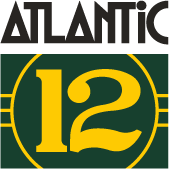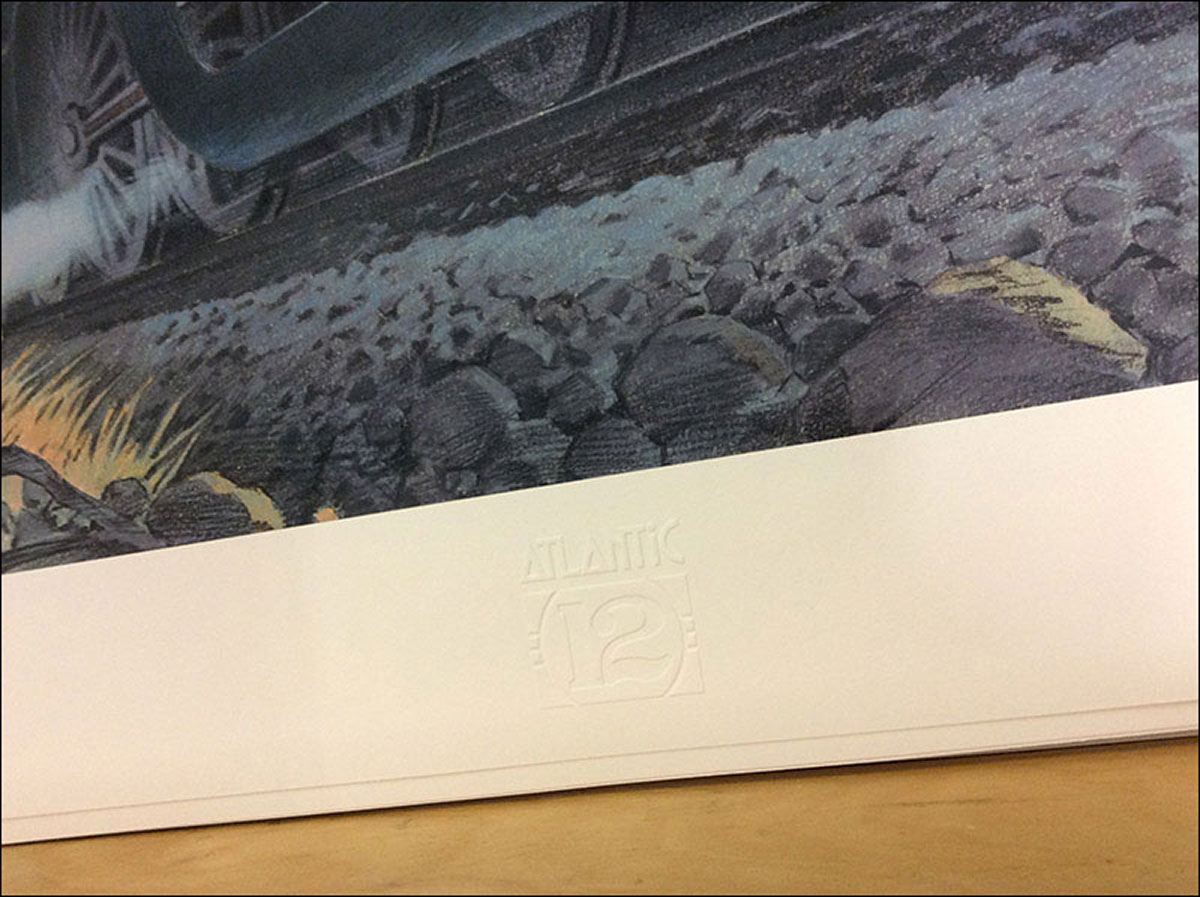Printing techniques : offsets (quadri), silkscreen prints and pigment ink digital prints
From the approach of copyist scribes in ancient Egypt to the invention of the printing press and the use of woodcuts around 1400 in Europe, there has been a long and rich tradition of multiple printing throughout history.
Images printed in multiple copies make it possible to disseminate works of art more widely. The series makes it easier to popularise and appropriate works of art, as images printed in several versions can be purchased at a reduced price. The work of art in multiple editions is both plural and authentic, making it accessible.
By using print as an artistic medium, the artists are responding to the ambition to make each edition a work that is both original and multiplied.
Atlantic12 reproduces François Schuiten's originals using 3 different printing techniques: offset, screen printing and pigment inks. The choice of one or the other depends on the editorial project of the image that we wish to make accessible by reproducing it. Each printing technique has its own specific paper. Fine Art paper, 100% cotton, archival quality, acid-free. This section provides a brief explanation of these 3 techniques.
Offset prints
Offset is a printing process that improves on lithography by replacing the lithographic stone with a bendable plate adapted to a cylinder. It is a printing process that enables a wide range of colours to be reproduced from three basic colours: cyan, majenta and yellow, to which black is added. The presses are therefore made up of 4 printing units, which implies the creation of 4 plates. This is known as a four-colour press.
Our offset printer has a machine that allows an anti-uv varnish to be added at the end of the process to help preserve the images and give them a brightness that is as faithful as possible to the original.
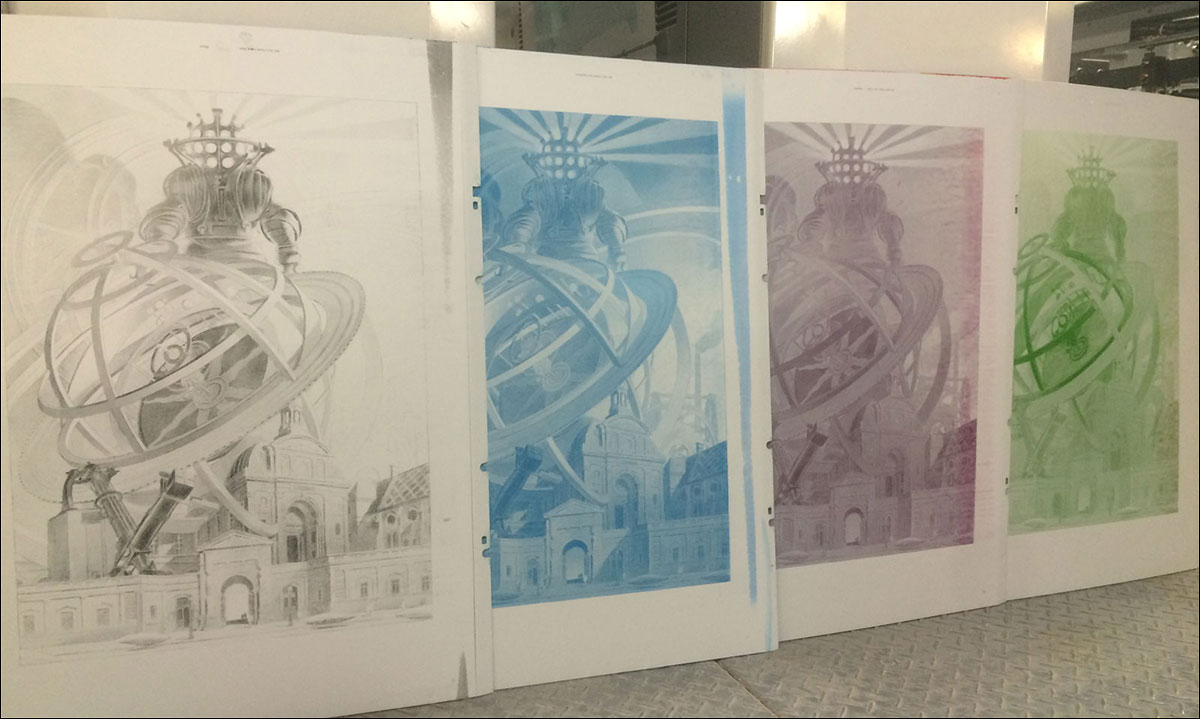 CMYK plates created for the four-colour printing of Drawing Machines. DCL Printers, Brussels, 2016.
CMYK plates created for the four-colour printing of Drawing Machines. DCL Printers, Brussels, 2016.
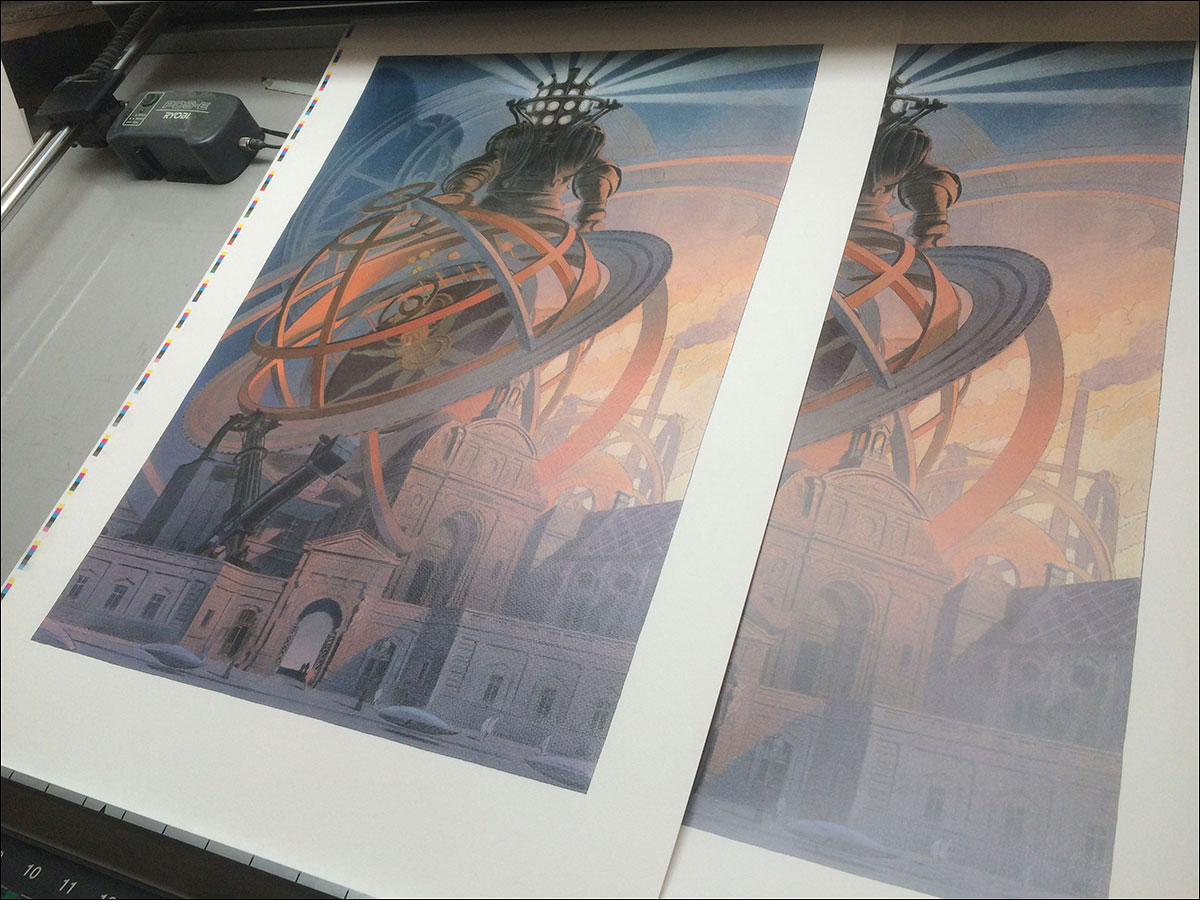 Machines à dessiner, DCL Printers, Bruxelles, 2016.
Machines à dessiner, DCL Printers, Bruxelles, 2016.
Silkscreen prints (serigraphs)
Screen printing is a printing technique that uses stencils (originally silk screens) inserted between the ink and the substrate. Each colour is the result of an individual machine pass and is laid out as a “flat”. There is therefore no screen. Screen printing is particularly popular for the quality and depth of its solid colours. This printing process requires a lot of work: making films for each colour, making stencils on frames (1 per colour) using coating and ensolation techniques (a process whereby the stencil is first filled with a photosensitive emulsion and once dry, the photosensitive emulsion hardens using ultraviolet radiation), colouring (pass after pass) and finally drying.
Not to be confused with lithography (from the Greek lithos ‘stone’ and graphein ‘to write’), which is used to create and reproduce graphic works in several copies from drawings reproduced on limestone (lithogravure). The paper is brought into contact with the inked stone in a press. The print is made colour by colour after a manual selection transferred to the stone. The quality of transcription and the lithographer's sense of interpretation ensure the success of the print. Xylography (from the Greek xulon ‘wood’ and graphein ‘to write’) is also a process of multiple reproduction of an image on a medium such as paper or fabric, but which uses the technique of wood engraving (xylogravure).
It is sad and extremely regrettable that the profession of screen printer is disappearing, as this printing technique offers a unique visual result that is incomparable to other types of printing. Atlantic12 at least has the privilege of working with the last 2 exceptional Brussels silk-screen printers, capable of reproducing lines as fine as Schuiten's in large format and using up to ten different colours, always with the absolute precision and exacting standards that are the fruit of decades of experience and expertise: Philippe Strulens for SP Production, who unfortunately ceased his activities in 2019, and Vincent Carlier (Atelier Vertical), who is still in business.
Watch this mini-film, which in just a few minutes retraces the process of creating a handmade silkscreen print.
RALENTIR by Schuiten and Durieux, Atelier Vertical, Brussels, 2021.
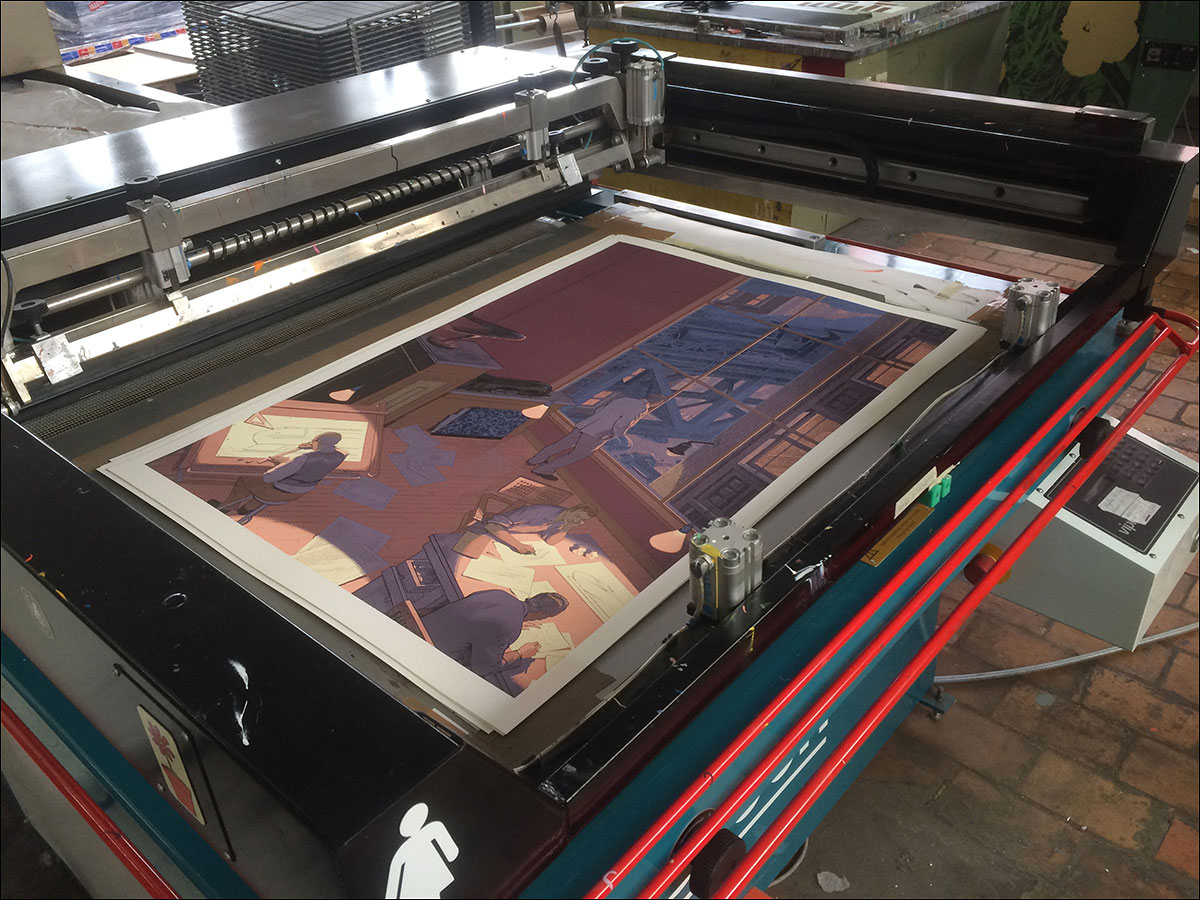 Dialogues, SP Productions, Bruxelles, 2016.
Dialogues, SP Productions, Bruxelles, 2016.
Pigment ink digital prints (digigraphies)
Digital printing, giclée or, more specifically, digigraphy (a label created by ©Epson), is a printing process using digital techniques on large-format pigment inkjet printers. Inkjet printers use a dozen or so liquid inks and deliver exceptional, almost photographic, colour results. Even with the help of a thread counter, no screen is visible to the naked eye. Inkjet is a non-contact printing process in which tiny drops of ink (in the picolitre range) are projected by nozzles. Closer to oil painting, pigment inks contain large solid coloured particles (only a few microns) that are simply transported by a transparent, easily evaporated fluid.
The term ‘digital print’ appeared at the end of the 1980s to designate all prints produced by a printer. Its origins lie in the history of printmaking. Since its beginnings, printmaking has been linked to technological progress. It took off with the invention of paper and contributed to the development of scientific knowledge through its almost exclusive role in disseminating images. Print is the generic term used to describe an image printed on paper using a flat support that has been inked and pressed, using a choice of engraving, lithographic or screen printing techniques.
Printing and mechanised reproduction subsequently transformed artistic processes such as printmaking. The spread of lithography, screen printing and now digital printing demonstrates the continuity in the evolution of printmaking. The development of digital printing has paralleled that of digital art and the popularisation of digital photography. Interest in digital photography has increased demand for archival papers and inks, resulting in improved conservation of digital prints.
